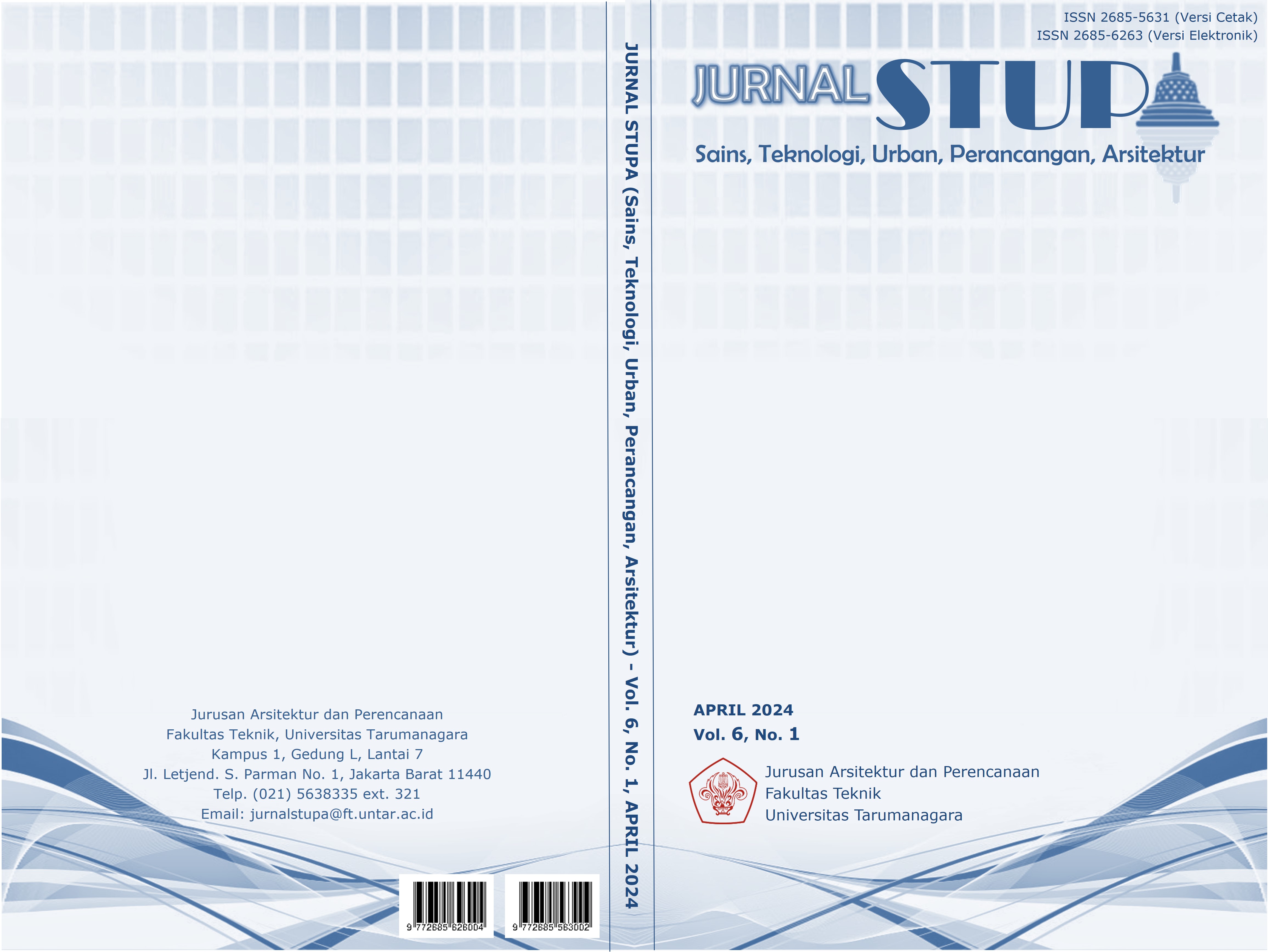PERAN ARSITEKTUR WELLBEING DALAM MENINGKATKAN KESEJAHTERAAN KARYAWAN DAN MENGATASI SICK BUILDING SYNDROME DI LINGKUNGAN KERJA
Main Article Content
Abstract
Every workplace has the potential for dangers that can affect employee safety and health, making it difficult for employees to achieve wellbeing. This research aims to investigate problems in the physical work environment that influence employee wellbeing using a wellbeing architecture approach. Wellbeing is a sense of wellbeing that includes health, happiness and prosperity. Wellbeing architecture is used as an approach in designing buildings and spaces that focuses on creating an environment that supports the holistic well-being of its users. So it can minimize the occurrence of sick building syndrome. By focusing on the role of architecture in creating work spaces that support physical and mental balance while preventing employees from experiencing sick building syndrome, this research explores what employees feel when working and how the design of the physical environment can influence and contribute positively to employee well-being. The research method involves qualitative and quantitative analysis of the physical work environment and employee feelings, by combining data from employee surveys and questionnaires, workspace observations, and literature reviews related to wellbeing architecture. Based on the research results, symptoms of sick building syndrome and employees' dissatisfaction with their current work space were found. Apart from that, several factors were found that needed to be considered when designing the physical work environment, namely aspects of nature, movement, connection and air quality. It is hoped that the results of this research will provide in-depth insight into critical factors in the physical work environment that influence employee well-being.
Keywords: employee; physical work environment; sick building syndrome; wellbeing
Abstrak
Setiap ruang kerja memiliki potensi bahaya yang dapat memengaruhi keselamatan dan kesehatan karyawan yang membuat karyawan sulit mencapai wellbeing. Penelitian ini bertujuan untuk menginvestigasi masalah yang ada pada lingkungan kerja fisik yang berpengaruh terhadap kesejahteraan karyawan dengan pendekatan arsitektur wellbeing. Wellbeing adalah rasa sejahtera yang mencakup kesehatan, kebahagianh dan kemakmuran. Arsitektur wellbeing digunakan sebagai pendekatan dalam perancangan bangunan dan ruang yang berfokus pada penciptaan lingkungan yang mendukung kesejahteraan holistik penggunanya. Sehingga dapat meminimalisir terjadinya sick building syndrome. Dengan fokus pada peran arsitektur dalam menciptakan ruang kerja yang mendukung keseimbangan fisik dan mental sekaligus mencegah karyawan mengalami sick building syndrome, penelitian ini mengeksplorasi apa yang dirasakan karyawan saat bekerja dam bagaimana desain lingkungan fisik dapat berpengaruh dan berkontribusi positif terhadap kesejahteraan karyawan. Metode penelitian melibatkan analisis kualitatif dan kuantitatif terhadap lingkungan kerja fisik dan perasaan karyawan, dengan menggabungkan data dari survei dan kuesioner karyawan, observasi ruang kerja, dan tinjauan literatur terkait arsitektur wellbeing. Berdasarkan hasil penelitian ditemukan gejala sick building syndrome dan rasa tidak puas karyawan terhadap ruang kerja mereka saat ini. Selain itu ditemukan beberapa faktor yang perlu diperhatikan saat merancang lingkungan kerja fisik, yaitu aspek nature, movement, connect, dan air quality. Hasil dari penelitian ini diharapkan dapat memberikan wawasan mendalam mengenai faktor-faktor kritis dalam lingkungan kerja fisik yang mempengaruhi kesejahteraan karyawan.
Article Details

This work is licensed under a Creative Commons Attribution-NonCommercial-ShareAlike 4.0 International License.
This work is licensed under a Jurnal Sains, Teknologi, Urban, Perancangan, Arsitektur/ STUPA Creative Commons Attribution-NonCommercial-ShareAlike 4.0 International LicenseReferences
Alwi, H., Setyaningsih, Y., & Wahyuni, I. (2020). Kejadian Sick Building Syndrome Di Indonesia: Kajian Pustaka. Jurnal Kesehatan masyarakat, 6(2).
Creswell, J. W., & Plano Clark, V.L. (2010). Designing and conducting mixed methods research (2nd ed.). Thousand Oaks, CA: Sage.
Davis, J. L. (2019). Well-being in Architecture: A Comprehensive Study. Penerbit A.
Global Wellness Institute. (2017). Architecture and Well-being: A Global Perspective. Retrieved from https://globalwellnessinstitute.org/.
Haris, H. (2010). Metodologi penelitian kualitatif untuk ilmu-ilmu sosial. Jakarta: Salemba Humanika, 8, 131.
Sugiyono (2008). Metode Penelitian Bisnis. Alfabeta, Bandung.



